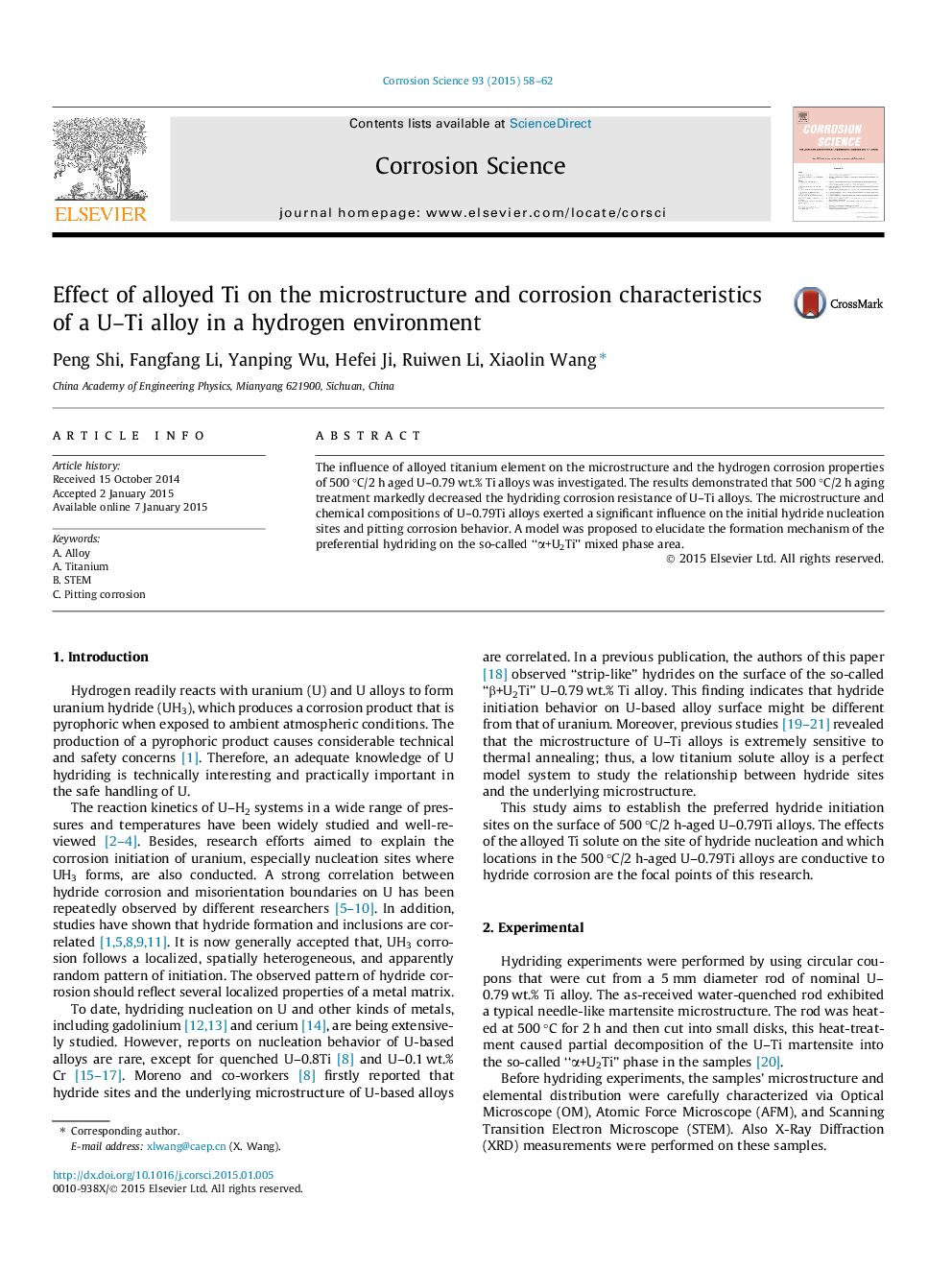| Article ID | Journal | Published Year | Pages | File Type |
|---|---|---|---|---|
| 1468581 | Corrosion Science | 2015 | 5 Pages |
•The formation and growth of uranium hydride sites on U–Ti alloy surface has been investigated.•Enhanced hydrogen corrosion due to Ti depletion is noticed.•STEM analysis of the microstructure and chemistry in the decomposed area composed of “α+U2Ti” phase is presented.•The impact of alloyed Ti on the microstructure and hydriding behavior is given.
The influence of alloyed titanium element on the microstructure and the hydrogen corrosion properties of 500 °C/2 h aged U–0.79 wt.% Ti alloys was investigated. The results demonstrated that 500 °C/2 h aging treatment markedly decreased the hydriding corrosion resistance of U–Ti alloys. The microstructure and chemical compositions of U–0.79Ti alloys exerted a significant influence on the initial hydride nucleation sites and pitting corrosion behavior. A model was proposed to elucidate the formation mechanism of the preferential hydriding on the so-called “α+U2Ti” mixed phase area.
